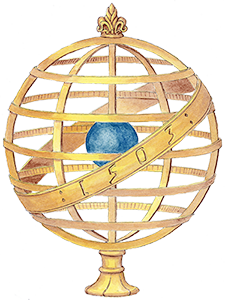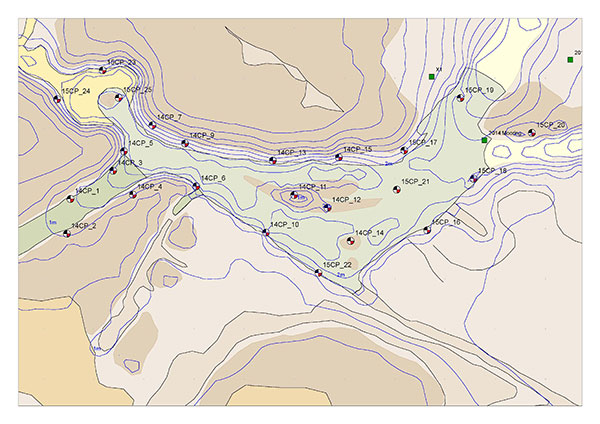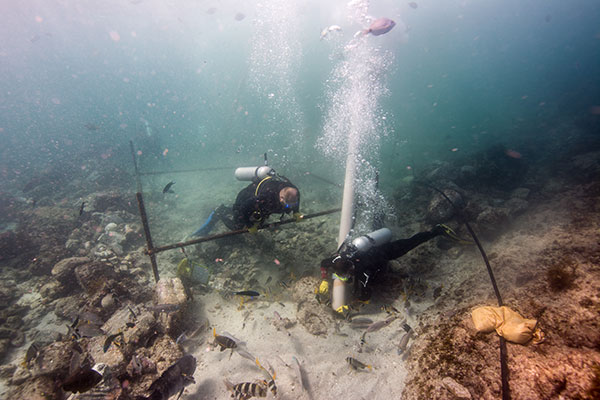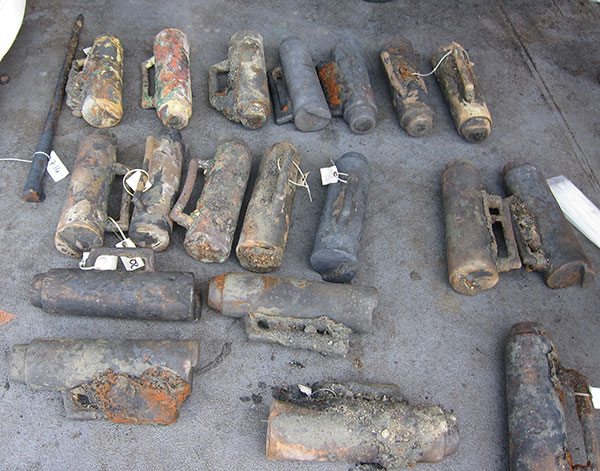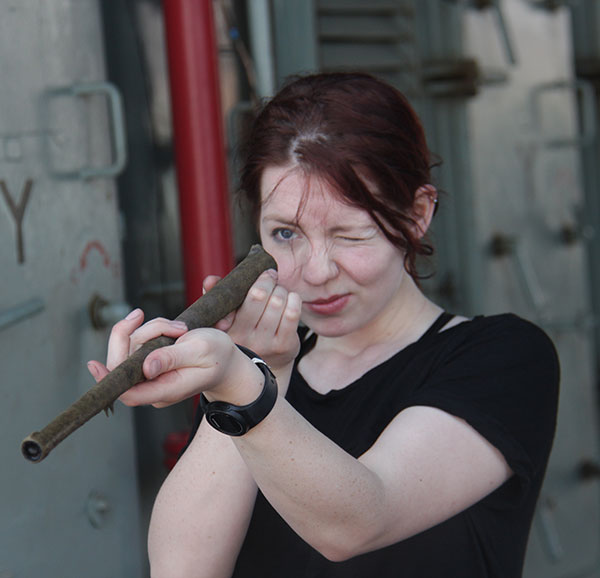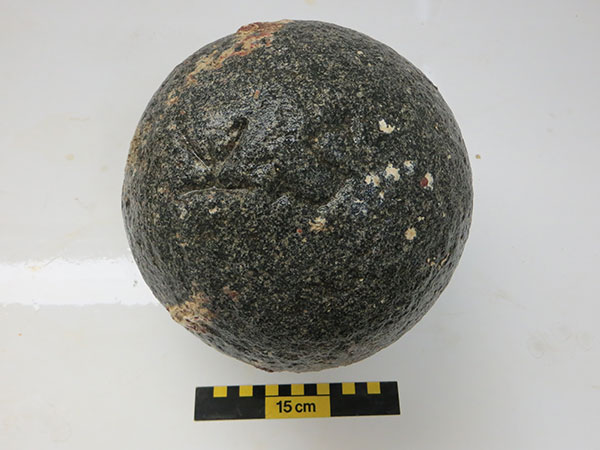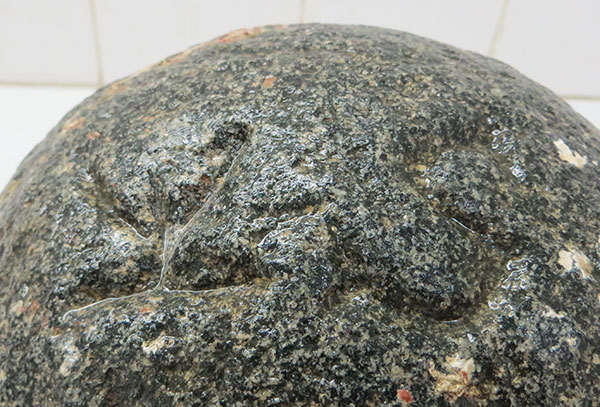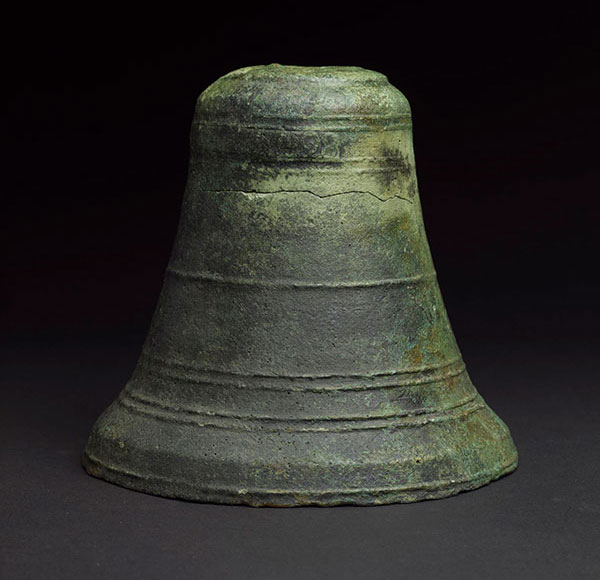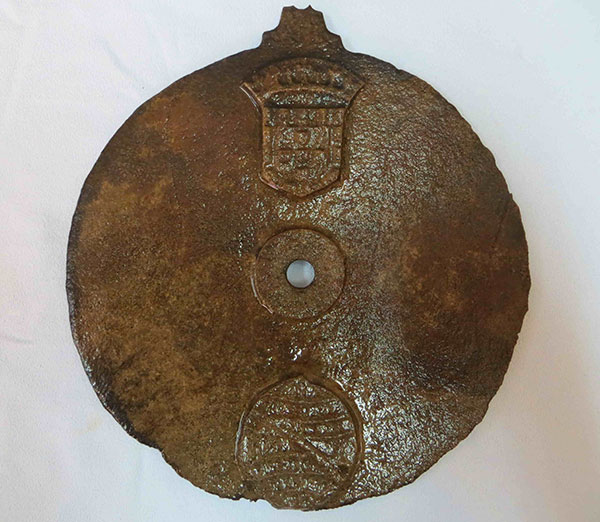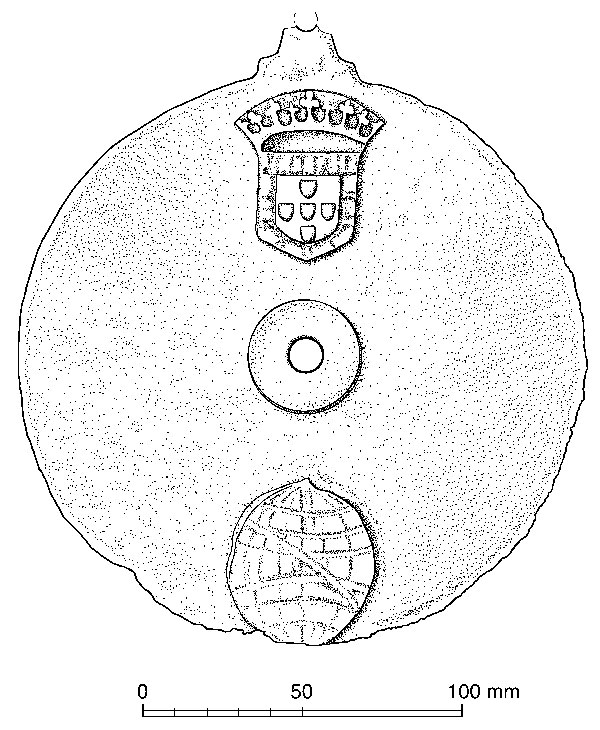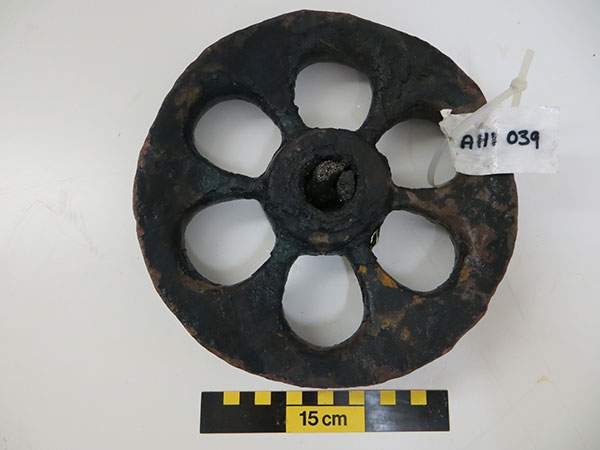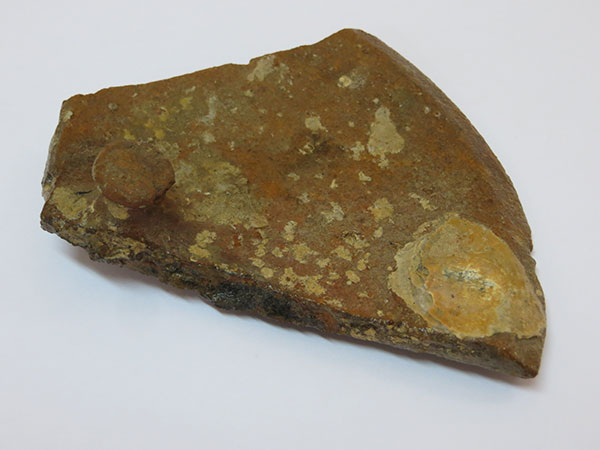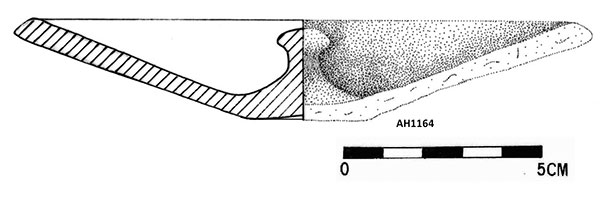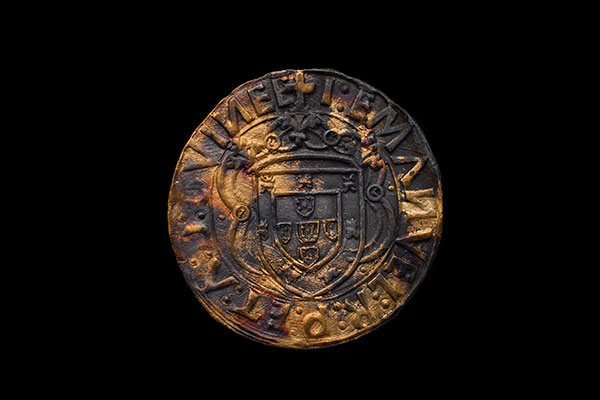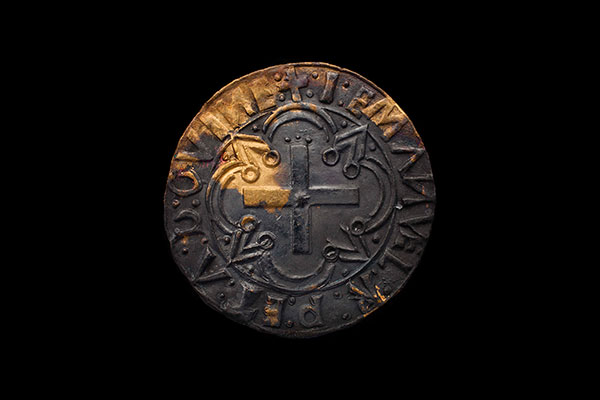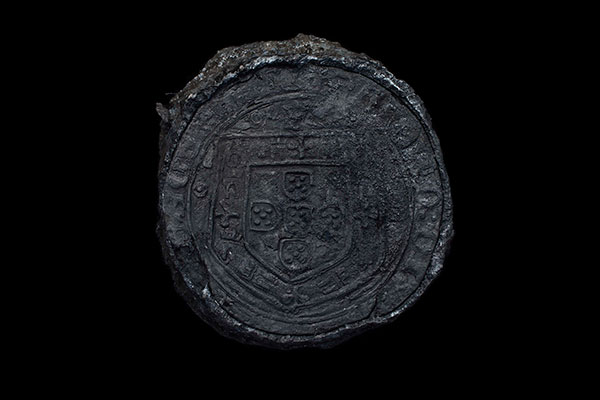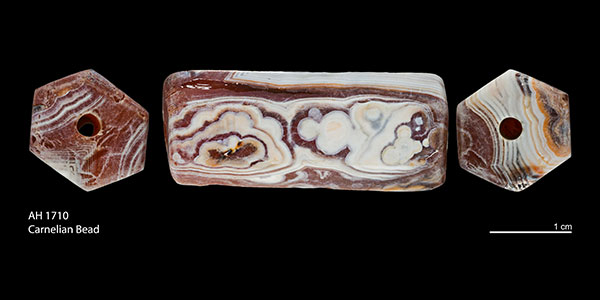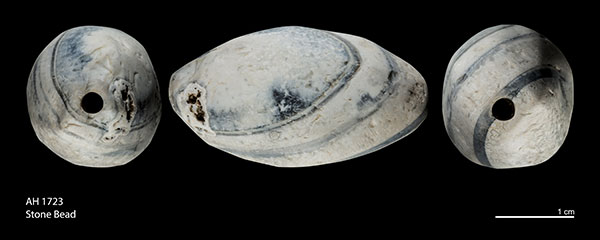ARCHAEOLOGY
Extracts from : A Portuguese East Indiaman from the 1502–1503 Fleet of Vasco da Gama off Al Hallaniyah Island, Oman: an interim report, Mearns, D.L., Parham, D., and Frohlich, B, International Journal of Nautical Archaeology Vol. 45.2, © 2016 The Nautical Archaeology Society.
To date, in excess of 2,800 individual artefacts have been recovered from the wreck site. This collection will be the subject of detailed archaeological study and assessment by a broad group of archaeologists and other experts for years to come. Although the focus of our initial scientific analysis was to determine the age, provenance and identity of the shipwreck, the next phase of the project will be to learn as much as possible about how the Portuguese conducted maritime trade and warfare in the Indian Ocean during this historically important period.
Excavation Methodology & Survey Control
The wreck site was divided into a series of adjoining 1 metre grid squares using frames made up on location from 3 m-long, 48 mm-diameter steel pipes joined at the corners by cross Kee Klamp® frame joints. The frames resulted in a series of 3 x 3 m grids that were further separated into nine 1 m squares using rope lines fixed with elastic cords. The frames were positioned as close to the seabed as possible and supported by adjustable legs. All finds recovered from each square were individually numbered in relation to their grid position.
The position and orientation of the frames was determined using conventional 3D tape trilateration (Direct Survey Method) referenced to a network of 15 fixed survey control points (CPs) installed on the seabed and positioned relative to each other, and in real world coordinates (WGS 84), using a combination of distance and depth measurements plus position measurements derived from GPS. The CPs were 8 mm-diameter mild-steel reinforcing bar, hammered into cracks in the rock and marked with yellow plastic discs. The position of each excavation frame was then calculated by taking three or four distance measurements and a depth measurement from the top of two diagonally opposite corner posts. The distance and depth measurements were adjusted using Site Recorder 4 software, which calculated the best estimate of position for each survey control point. After the adjustment, the measurements fit together to a precision of 15 mm (RMS residuals), with 51 distance and depth measurements used to calculate 15 CP positions. Surveys of this nature should achieve RMS residuals below 30 mm under normal diving conditions, so the results are better than expected given the considerable wave surge experienced on site.
Excavation involved the controlled removal of all sediment and finds within the area down to bedrock. Spoil was removed by airlifts and by hand in areas with delicate material. The site contained many rocks of boulder size between 25 kg and 1500 kg in weight. These were removed by placing them into one-tonne-bulk-container bags and then moving these with the use of air bags, or, in the case of large boulders, by straps connected directly to the air bags. Boulders were either moved to an adjacent area away from the excavation, or, in some situations, depending on the available space, they were returned to the excavated area on completion of excavation work in order to backfill the excavated holes.
Copper-Alloy Breech Chambers
Nineteen copper-alloy breech chambers, known by the Portuguese as a câmara, were found within the confines of the main concretion. This is quite possibly the largest number of bronze breech-chambers ever recovered from a single shipwreck and thus provides the basis for an interesting comparative study about their use on an early 16th century warship.
These removable and reusable blocks are used to fire breech-loading swivel-guns such as a berço. The recovered chambers were similar in size, c.305 mm long, c.45 mm internal bore, and design. Each has a rectangular cast handle, a touch-hole that was originally teardrop shaped, a spur at the base for locking the chamber in place by a wedge, and a tapered neck with the chamber-mouth sealed with a wooden tampion. As many of the recovered breeches have tampions sealed tightly in place, gunpowder may still be found within the chamber when they are more fully examined in the future.
Hand-Held Firearms
Four copper-alloy barrels have been recovered. The barrels appear as hexagonal tubes of varying lengths featuring a front and back sight with a pan at 90 degrees to the sights. The bottom of the barrels have the remains of lugs which would have been used to fix the barrel to a stock, although none of the wooden stocks have survived.
These weapons have been interpreted as being an early bronze matchlock known as an arquebus. These relatively small calibre (13mm), low velocity weapons would not have had springs. Instead they were fired with a hinged, weighted, "S" shaped piece of metal with the match holder at one end and the trigger at the weighted end. These were known as a serpentine and one surviving example was found on the site. A considerable number of 13mm diameter shot were also found, which match the calibre of this weapon.
Munitions
The quantity and variety of munitions found on the wreck site is evidence of the role Vicente Sodré’s Esmeralda played as the lead ship of a heavily armed squadron ordered by Dom Manuel I to independently ‘guard the mouth of the Strait to the Red Sea’, in effect to disrupt the trading of enemy ships. These munitions included 35 lead shot (13mm) that match the calibre of the hand-held firearms described above; 728 lead-iron composite shot, which vary from 23-62mm in diameter and correlate in size with the bronze breech blocks; 71 iron shot c.94mm in diameter; and 156 stone shot ranging from 40 to 220mm with peaks at 90, 100, 120 and 220mm.
The stone shot have been fashioned from two basic rock types: a fossiliferous limestone and a lithologically diverse igneous – or granitic - rock. The initial petrographic examination and dating of these rocks by experienced Portuguese geologists suggests that both types originated from outcrops or ancient quarries not far from Lisbon. Two different studies are being devised to possibly answer some fundamental questions about the igneous shot in particular, which could provide a better understanding for archaeologists interested in how the Portuguese fleets were supplied with such munitions.
The first study aims to find the likely source of the igneous rock by comparing the petrography and elemental chemistry of a broad sample of rocks taken from the region (Abrantes) where the stone shot are believed to originate, with a selection of the stone shot recovered from the wreck site. The aim of the second study is equally challenging. It will hopefully explain the meaning, or purpose, of the ‘VS’ mark carved into every one of the large igneous cannon balls. Does the ‘VS’ actually stand for Vicente Sodré, and thus provide more compelling evidence for identification of the wreck as the Esmeralda, or is there a more mundane explanation for this mark. The first step in this investigation will be to collect laser scans of the ‘VS’ mark on each of these 42 cannon balls. By digitally comparing the carvings for their size, depth and style we may begin to understand the stonecutter’s intentions in making this mark.
The Ship’s Bell
A small bell (height - 19.5 cm; external diameter at the mouth - 22 cm) discovered beneath a boulder on only the second dive of the 2013 expedition is believed to be a ship’s bell – most likely the bell of Esmeralda. The bell was fractured in two pieces with its crown missing leaving a rectangular hole on its top. It also had a long vertical crack that ran from the waist of the bell to the lip, and generally was in a fragile condition. The bell was stabilised during the conservation work, after which the two pieces were joined back together.
The bell is simply decorated with a series of ten bead lines and has a raised inscription just below the shoulder containing letters and numerals that were partially revealed before conservation began by way of a series of non-destructive imaging tests more fully described on the Science Page. After the conservation was completed the inscription was confirmed to include the number ‘498’ and the single letter ‘M’. All other characters that were in the inscription have been abraded smooth and were impossible to decipher. The ‘498’ is interpreted to be the date of the ship’s original launch, which would fit with the chronology of Sodré’s squadron having left Lisbon in 1502. As far as we know this would make this bell the oldest ship’s bell ever to be discovered.
Copper-Alloy Disc
The most curious and intriguing artefact we recovered was a thin copper-alloy disc with raised decorations on one side unmistakably identifying it as Portuguese in origin. The decorations were a Portuguese royal coat of arms and the esfera armilar (armillary sphere). The esfera armilar was chosen by Dom Manuel as his personal emblem when he was the Duke of Beja before becoming king and it is recognised as an iconic symbol of Portuguese navigation during the Age of Discovery. It is commonly found on Manueline architecture throughout the country and still graces Portugal’s national flag today.
The disc is 175 mm in diameter, 1.5 mm thick and has a hole of 10 mm formed by a raised central boss 32 mm in diameter. At the top of the disc there appears to be a bracket, partially broken or corroded, suggesting the object was meant to be suspended. No writing of any type was observed, nor were any other artefacts found near the disc to help explain its identity. The function of the disc is still unknown but the important decorations indicate it was a high-status object on board the ship.
The disc does share some characteristics – mainly its shape, size, possible suspension ring and central hole/hub – with an astrolabe (an early navigation device), although it is significantly different than other early marine astrolabes.
The fundamental characteristics of a marine astrolabe is that it is a solid and heavy instrument ballasted to help it hang plumb on a moving ship and with cutouts to reduce the effect of windage. In contrast, the disk we recovered is more akin to a planispheric astrolabe. Although there are no clear scales or writing that would confirm its function as a navigation device, the back side of the disc opposite the decorations does appear to have some very faint marks that require closer examination in the future probably by CT or laser scanner.
Ship’s Rigging
A total of 29 individual rigging elements were recovered from the site. The majority of these are in the form of coaks, which are copper alloy bearings used on wooden sheaves to keep them from splitting and galling by the pin of the block. The coaks ranged from 35 to 80mm2 with an average thickness of about 20mm. A number of copper-alloy sheaves were also recovered, including two large block sheaves that were probably a working pair. Sheaves this size (235mm diameter; 5.86kg weight) would have been used for handling heavy loads or critical work such as the main ties at the masthead and were probably the largest of blocks used on a ship of this period.
Ceramics
The assemblage of ceramics (1,039 sherds) were directly observed by Tânia M. Casimiro of Universidade Nova de Lisboa. Dr. Casimiro’s assessment was that some 52% of the objects were produced in Portugal using red micaceous fabrics that are usually related with the Lisbon area, with their shapes corresponding to everyday wares such as cooking pots, costrels, lids and cups. Asian ceramics were also frequently identified with the presence of Ming productions such as Hongzhi porcelain (1488–1505), celadon plates and martabani, and diverse blue-glazed objects that were likely produced in Iran. West African pots, shaped and decorated to resemble baskets were also part of the collection. Collectively these ceramics are consistent with the 1502-1503 date of the Sodre squadron and the lands they visited during this voyage. The absence of any Iberian tin-glazed wares on the site is significant as these are a constant presence in Portuguese terrestrial and underwater archaeological contexts from the second half of the 16th century onwards and are rare or non-existent in earlier chronologies.
Silver and Gold Coins
Thirteen gold and twenty-four silver coins were found on the site. Some of the gold coins were found scattered in locations beneath the excavated sediment either on top, or within crevasses of the bedrock while the silver coins were all found in a small lump concreted to a handful of other gold coins. The absence of other contexts associated with the coins suggests that they have been dispersed among the wreck remains and over time have worked their way through the loose sediment down to bedrock level.
The gold coins are 12 Portuguese cruzados and a single Indian fanam. The fanam is a very small, 8 mm-diameter coin that was minted by various Indian states from the 12th to the 18th centuries, thus making it a poor tool for dating. The recovered fanam has been tentatively identified as a Vira Raya type issued by the Zamorinds of Calicut and mostly used on the Malabar Coast of India.
Of the 12 Portuguese cruzados, 11 were from the reign (1495–1521) of Dom Manuel I along with a single specimen from the preceding reign (1481–1495) of Dom João II. During Manuel’s 26-year reign more than 2.7 million of the 3.55-gram cruzados were minted in Lisbon. According to the numismatic expert António Trigueiros, the Emanuel cruzados are considered to be a single numismatic type, with five sub-types that quickly transitioned from sub-type 1 in 1495 through to sub-type 5, which was in regular production by the end of 1501 and kept without further change up to the end of Manuel’s reign in 1521. The Emanuel cruzados recovered from the site to date are a mixture of sub-types 1 and 5 as per the Trigueiros typology. The accuracy of the Trigueiros typology stems directly from his study of this collection of coins.
Silver coins from this period are a much better tool for dating than corresponding gold coins because they were minted over a more narrow and defined period. The best possible coin for dating the site happens to be the legendary índio (“The Indian”) as it was minted over such short period. After its creation by Dom Manuel in 1499 specifically for trade with India, the Índio was discontinued and replaced by the heavier tostão no later than 1504. The fact that none of the 24 silver coins found on the site were from the tostão series is another piece of evidence that supports our identification of the wreck as Vicente Sodré’s Esmeralda. See the Science Page for a full explanation of how the Índio and the other silver coins were identified by the CT scanning technology of WMG, University of Warwick.
Stone Beads
Thirty-six beads recovered from the site are made of stone not used for bead production in Portugal but were typical of the beads the Portuguese began to acquire in trade with India and have been found on numerous shipwrecks of homeward bound Portuguese East Indiamen. Most of the beads were either hexagonally cut, tubular beads made of carnelian stone or barrel shaped beads believed to be white agate. All but one unique circular bead had a bore channel.
